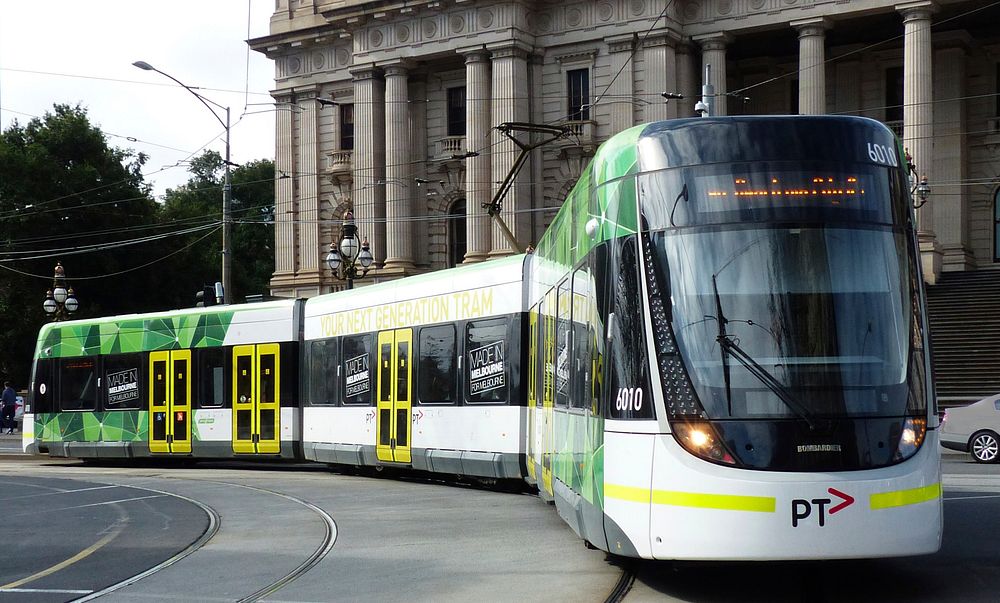https://creativecommons.org/publicdomain/zero/1.0/https://www.rawpixel.com/image/4026149

The E-class trams are three-section, four-bogie articulated trams that were first introduced to the Melbourne tram network in 2013. They are being built by Bombardier Transportation's Dandenong factory, with the propulsion systems and bogies coming from Bombardier factories in Germany.
The E-class is part of the Tram Procurement Program, a Public Transport Victoria project aimed at increasing capacity and reliability of the tram network through the introduction of new trams, creation of new depot space, and upgrades to existing infrastructure. In September 2010, 50 were ordered with an option to purchase a further 100. In May 2015, a further 20 were ordered which will take the total to 70.
The first tram was delivered in June 2013 and after testing entered service on route 96 on 4 November 2013. As at the 27th August 2015, twenty seven were in service and one under testing and commissioning. Original public domain image from Flickr
Public DomainFree CC0 image for Personal and Business use